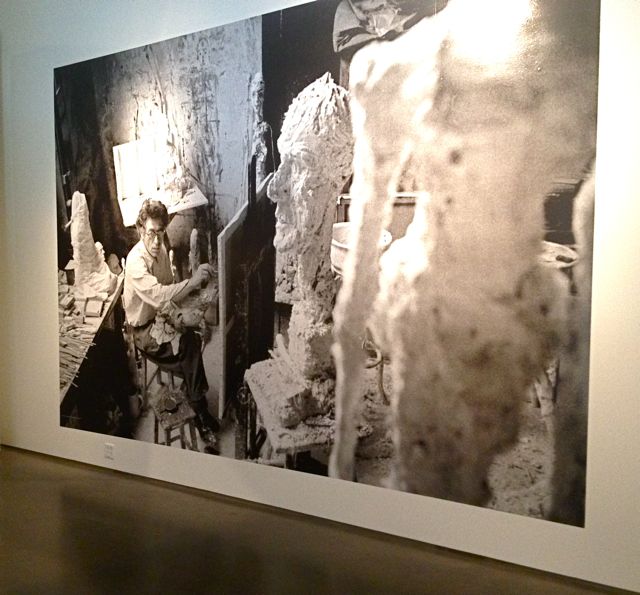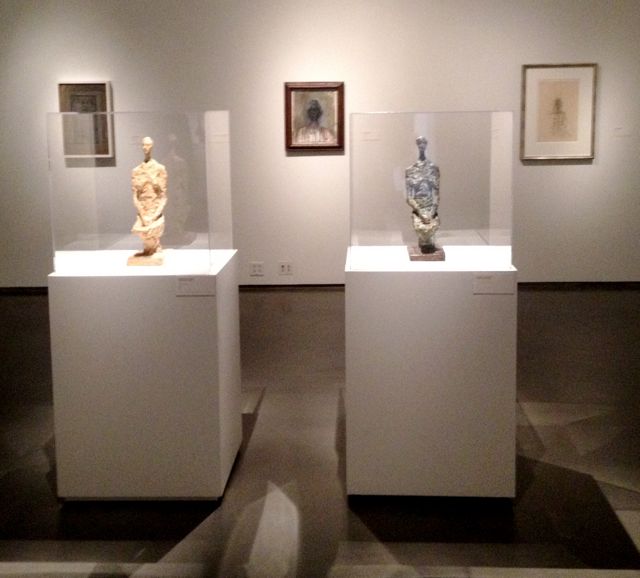
An intimate look at 20th-century art titan Alberto Giacometti
The Bechtler Museum of Modern Art (a Knight Arts grantee) has a new exhibition, “Giacometti: Memory and Presence,” that presents an intimate look at Alberto Giacometti’s life and career, exploring his artistic successes as well as familial relationships and inspirations. The exhibition will remain on view until February 8, 2013 and features more than 80 of Giacometti’s works in various media from paintings and drawings to sculptures and decorative arts.
Importantly, the exhibition moves through Giacometti’s life and work chronologically allowing the viewer to experience the artist’s aesthetic evolution. To complete this chronology the Bechtler has gathered works from the Alberto Giacometti-Stiftung in Zürich and the Alberto and Annette Giacometti Foundation in Paris as well as works from the Bechtler’s own collection. This exhibition provides a rare opportunity in the United States to view a holistic sampling of Giacometti’s work, particularly fragile plasters seldom on display from the Foundation in Paris.
Familial relationships played a pivotal role in Giacometti’s art and life- from the encouragement he received from his father, Giovanni who was a well known Post-Impressionist painter, to his artistic brothers Diego and Bruno. “Giacometti: Memory and Presence” wonderfully explores these connections, juxtaposing Giacometti’s early works with a painting by his father, titled “Alberto and Diego” and later pieces by Giacometti with art by Diego and Bruno at the end of the exhibition.
Giacometti experienced a life-long bond with Diego, a decorative arts designer, and Bruno, a famous architect. He shared his studio in the Montparnasse neighborhood of Paris with Diego and often used Diego as a model. Early on Giacometti’s studio was sparse with no electricity or running water, but its location in a burgeoning artistic community was stimulating and insured his contact with Surrealism and Cubism. One wall of the exhibition displays an enormous photograph of Giacometti’s studio where he continually worked from 1926 until his death in 1966. This photo offers audiences an intimate look into Giacometti’s private artistic realm where layer upon layer of paint, plaster, brushes and sculptures accumulated.
“Ottilia” by Alberto Giacometti 1935.
“Giacometti: Memory and Presence” also explores Giacometti’s interest in modernism. “Ottilia” from 1935, one portrait of many Giacometti did of his sister, highlights his experimentation with Cubism’s planar surfaces and attests to the stimulation Giacometti found in his family. “Sculpture” from 1927-1930 showcases his interest in African sculptures and totems, which very much contributed to Giacometti’s interest in the spiritual nature of art. Even as Giacometti delved into modernism, he remained excited by his early studies of Renaissance masters and classical art. Several of Giacometti’s decorative art objects in the exhibition highlight this.
“Sculpture’ by Alberto Giacometti 1927-1930.
Ultimately, Alberto Giacometti’s pursuit of the spiritual in art and quest to reveal the fundamental nature of existence led him to develop his own insightful style. He experimented with painting people and settings from memory versus capturing sitters exactly as he saw them at that instant. He worked to convey unusual as well as universal qualities. Eventually, he reduced the human form to its essentials as we see in “Femme assise (Annette)” from 1956.
From left to right: “Femme Assise” by Alberto Giacometti 1956, “Femme assise (Annette)” by Alberto Giacometti 1956.
Uniquely paired with “Femme assise (Annette)” is the plaster version “Femme Assise.” This pairing provides a rare opportunity to view plasters side-by-side with the resulting sculptures. Viewers can see the intended qualities of the work, fashioned by the artist’s hand and how they translated into bronze.
The Bechtler Museum of Modern Art has provided Charlotteans with an incomparable chance to view art works by one of the great titans of European Modernism. The exhibition is unique not only because it gathers works by Giacometti from Zürich and Paris, but also for the intimate perspective it offers of Giacometti’s life and work.
Bechtler Museum of Modern Art: 420 South Tryon St., Charlotte; 704-353-9200; www.bechtler.org. Hours: Mon., 10-5 p.m.; Tues., closed; Wed.-Sat., 10-5 p.m.; Sun., 12-5 p.m. Admission: adults, $8.
Recent Content
-
Artsarticle ·
-
Artsarticle ·
-
Artsarticle ·



